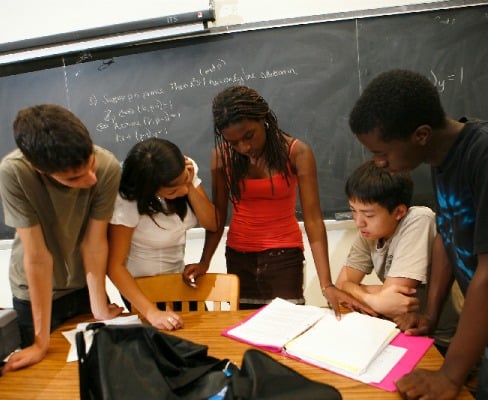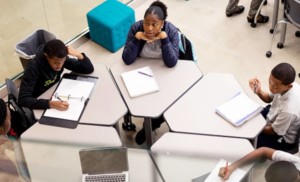The Education Response to the Opportunity Gap
 Robert Putnam’s data is really disturbing. The Harvard sociologist is at it again. Like Bowling Alone, Putnam’s new data (discussed recently at the Aspen Ideas Festival) suggests the opportunity gap is widening. More than race and poverty, class and a lack of social mobility are widening gaps that reduce opportunity.
Robert Putnam’s data is really disturbing. The Harvard sociologist is at it again. Like Bowling Alone, Putnam’s new data (discussed recently at the Aspen Ideas Festival) suggests the opportunity gap is widening. More than race and poverty, class and a lack of social mobility are widening gaps that reduce opportunity.
It may be news but most educators are well aware of the opportunity divide. There are more kids living in poverty and many come to school less well prepared, are less well supported, and benefit from less enrichment.
David Brooks issued a short political prescription but didn’t mention public education. There are school models, state policies, and community responses that can help address the opportunity gap.
Some school models work much better for low income students. Historically these ‘ No Excuses’models feature high expectations, ambitious academics, and a longer school day and year.
Blended learning school models go a step further and add a dimension of customized learning where adaptive software helps identify and address individual learning needs. Engaging content and games can also boost student motivation.
As Bryan and Emily Hassel discussed recently, blended learning models leverage teacher talent. And, as Charlie Bufalino from Rocketship Education described , the school’s learning lab targets basic skills while helping to pay for a long day and year.
Digital Learning Now! is a state policy framework designed to promote equity and achievement. Several of the Ten Elements of High-Quality Digital Learning directly promote equity.
- Access to full and part time digital learning opportunities ensures that all students can take advantage of quality teachers and content. (The first three Elements deal with access.)
- Funding that is weighted, performance-based, and portable drives more funding to kids with more risk factors. Portable funding powers options.
Other elements promote quality content and instruction and ensure access to good schools.
In addition to powerful school models and productive state policy, community supports make a difference. Communities in Schools (CIS) create links to youth and family services. Supported mainly by local fund raising, only a couple states provide budgetary support for CIS, but the results suggest it is an investment worth making. Community based organizations like Boys and Girls Club create a positive place for youth.
Powerful school models, supportive policies, and strong community supports can help more students achieve and graduate college and career ready. However, it remains troubling that these are to some extent stopgap measures for an economy with weakening mobility and a society with weakening family supports. A strong system of education is the best antidote. But Putnam’s data about weakening opportunity for bottom quartile kids is worth discussing at the next meeting of every faith congregation, city council, and chamber of commerce.
This blog first appeared on EdWeek.





0 Comments
Leave a Comment
Your email address will not be published. All fields are required.